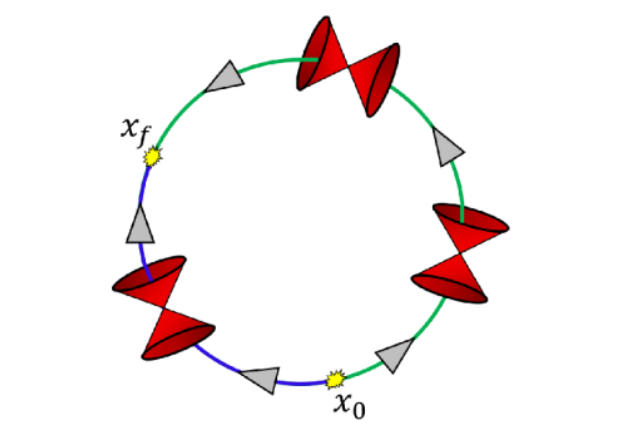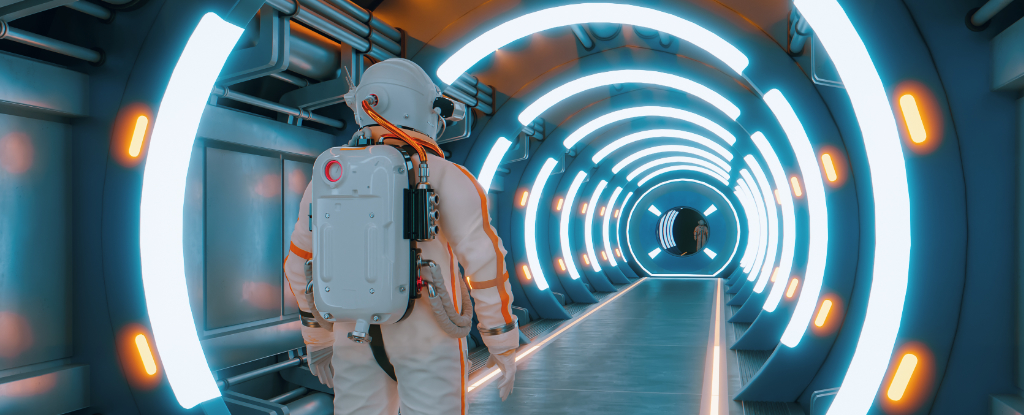Tourists of time all know one rule: never change the past. Whether it’s preventing your own conception or handing the blueprints to a time machine to a younger version of yourself, generating a paradoxical sequence of events is a big no-no that cancels out the possibility of time travel.
Vanderbilt University physicist Lorenzo Gavassino isn’t so sure this is as big an obstacle as time-traveler pessimists have made out. In a recent examination of the finer details on entropy, space, and time, he’s found we can murder all the grandparents we want.
The ‘grandfather paradox’ is a self-contradictory situation; traveling back in time and killing your grandfather as a child would prevent your birth. Which means you now don’t exist, so how can you go back and kill him?
It’s possible you’ve already done it, in fact, and, well, conveniently forgotten all about it.
General relativity sets the stage for treating time like a kid’s train set on a mattress, shortening and lengthening tracks with respect to one another depending on nearby masses and acceleration of observers.
Pushing the rules to their limit – as might occur in extreme environments such as black holes – we might imagine these distortions allowing for tracks that loop back on themselves, creating ‘closed timelike curves’ that send trains back to the beginning.
The outcomes of this temporal roundabout have been explored extensively in fiction as well as other hypothetical musings, leading to anything from the branching of new timelines to the triggering of actions that ensure the same events occur over and over again.
But to understand what this might look like physically, we may need to break the whole system down to its thermodynamic foundations and ask what happens to the states of order when a system goes back in time.
We can distinguish between yesterday and tomorrow based on what we remember versus what we anticipate; physicists have no such luxury.Our Universe, for the most part, is time-symmetrical, in that its laws can be used in reverse to predict starting conditions.
One feature of physics that lines up neatly with time’s arrow is entropy – the random shuffling of states that makes something ‘ordered’ likely to change into a disordered state with every passing second… without some kind of intervening effort, at least.
While we’ve understood the statistical fundamentals of thermodynamics for a good century or two, physicists are now currently wrestling with the quantum machinery behind it.
To this end, Gavassino wanted to know the quantum consequences of taking a system of high entropy – such as a time-traveling spaceship – and introducing it back into its low entropy past.
By reasoning, and through use of quantum statistical mechanics, Gavassino shows the time tourist’s own entropy can’t continue to grow as they ‘go back’, with quantum fuzziness effectively canceling expected disorder to create a parallel entropic timeline that begins and ends at the same points.

What would that look like for the contents of the temporally looped spaceship? Processes that we might expect to be linked to entropy would necessarily change, potentially reversing.
Circling back to a spry young grandfather courting your grandmother the first time, the time loop could make his untimely death reversible; your memory of why you ever wanted to murder him in the first place may be erasable. In other words, all bets are off in a closed loop where quantum physics smoothes out any intrusive entropy.
Gavassino isn’t the first to consider how features of quantum mechanics may behave when time doubles back, with some finding reason that the wave-like nature of the Universe makes our perspective of time travel an absurdity.
Given we’re still yet to learn how quantum mechanics meshes with general relativity, or even what space and time really are in a fundamental sense, using time travel as a thought experiment is a fun way to probe the limits of current knowledge.
From an engineering perspective, this knowledge doesn’t lend itself to the construction of any time-warping flux capacitors. You’ll just need to wait for your future self to send you the blueprints.
This research was published in Classical and Quantum Gravity.





